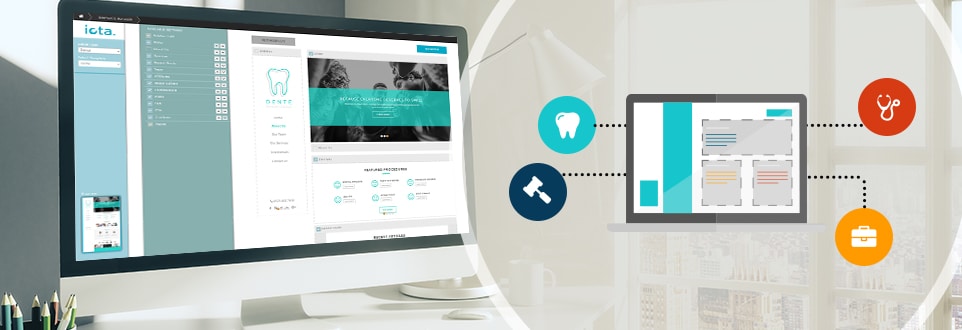It’s a common misconception among small businesses that online reputation management is primarily defensive, that it’s all about taking down negative reviews. After all, reviews only become a problem when they’re bad, and that’s when businesses come to agencies looking for a solution lest it cost them new customers.But there’s an equally important aspect that gets neglected along the way: what to do with positive feedback.
Most of these businesses don’t realize that online reputation management encompasses positive feedback, and should be part of their strategy as well. In the same way that negative reviews should be addressed to prevent potential customers from being turned away, positive reviews and enthusiastic brand mentions should be seen as opportunities to drive more customers.
Small businesses and agencies alike should change how they view online reputation management: from primarily defensive to proactive, from managing a crisis to harnessing an opportunity.
Leveraging positive feedback means empowering the customers who are already passionate about the client to entice others to patronize the business as well. It means turning these customers into your client’s brand advocates.
The Power of Brand Advocates
Brand advocates aren’t just satisfied or loyal customers. What sets them apart is that their enthusiasm for the brand leads them to evangelize it to other people in their personal network and beyond. Brand advocates create and share more than twice as much positive word-of-mouth than the average customer. These could range from positive reviews on review sites and social media, blog posts, or emails to friends and family about their experience with the brand.
Brand advocates are uniquely positioned to influence the purchasing decisions of their peers, as customers are more inclined to trust recommendations from other customers. According to a study by Nielsen, 83% of customers trust recommendations from friends and family, while 66% trust customers’ opinions posted online.
In spite of this, there remains a huge brand advocacy gap: the large majority of customers satisfied with a brand aren’t talking about it online. One study by Ogilvy shows that hotels in the US have less than one social advocacy mention per 100 stays, even though some boasted satisfaction scores of 80% or more. For small businesses, even identifying existing brand advocates, and making the most of their positive word-of-mouth, is a challenge. “[F]ew brands have mastered online word-of-mouth marketing techniques, the results of which can go viral very quickly,” says Randall Beard, President of Nielsen Expanded Verticals.
Brand advocacy can’t be manufactured, but it can be encouraged. There are ways to spark a conversation around a brand, and elevate that conversation into genuine advocacy. Larger brands have the resources and advanced tools to encourage brand advocacy that smaller businesses do not.
But this doesn’t mean that they can’t make it a part of their marketing strategy.
This is where agencies come in. Although each client will be different, creating a successful brand advocacy strategy involves accomplishing three key steps.
1. Identify Passion

The first step for an agency is to map out the business’ customer journey, and identify potential brand advocates at each touchpoint:
- Are there people who regularly comment on their blog posts, or like, share, and retweet their posts on social media?
- Are there people who mention the brand outside of these channels?
While the majority of positive brand mentions are casual, the ones you and your client will be interested in are those that exude passion for their business:
- What aspect of the brand, product, or service do these potential advocates usually talk about
- What drives their passion? What do they love about the business?
It will be different with each client, but brand advocacy conversations often end up revolving around one or two specific features of a service or a product, according to the same study by Ogilvy. “[D]iscussion of the bar and bathroom for Kimpton are higher than for its peers; similarly, breakfast at Holiday Inn generates more advocacy-related discussions.”
Identifying which topics brand advocates naturally gravitate toward when talking about your clients will provide valuable insight that will inform your next task. Think of SEO for hotels as an example—Who can serve as brand advocates for hotel owners? What type of content will the audience love? All these play into launching a successful brand advocacy.
2. Encourage Conversation

One obvious but often missed step is to ask customers to share their experience with the business online. Simply asking for a review is surprisingly effective (satisfied customers are often happy to oblige) and should not be underestimated.
Make it easier for potential brand advocates to spread the word about your client:
- Add share buttons for social media channels and email at the end of a blog post
- Provide them with the link to the client’s business profile on a review site
- Add the right hashtags to social media posts
All these can reduce the friction of posting online, and can dramatically increase positive engagement. Identify the most significant touch points, and make it easy for customers to advocate for the brand at each one.
These are just starting points, but they aren’t enough to encourage a conversation. “Passionate brand advocates can be powerful allies to amplify your message, but you need to give them a reason to talk,” says Beard. One common tactic that many brands have used with success is to create a contest that encourages customers to share their brand experiences on social media.
Use the insights you’ve gathered about what existing brand advocates are passionate about, and create a conversation around this topic.
3. Amplify Advocacy

Another way to acknowledge them is to feature them on one or several of the brand’s channels. This has the added benefit of making the most out of their positive word-of-mouth. Although brand advocates are effective at encouraging their personal network, the downside is this is often a small and limited audience. Share their posts and reviews and social media to show others in your client’s audience. You could even ask their permission to feature them in your client’s blog, or add their testimonials on the website.
In the digital age we live in, it is easier than ever for customers to share their thoughts online, and influence the purchasing decisions of their peers. Managing an online reputation is no longer optional—it’s a requirement. But it’s not because business should be afraid of what customers could say about them. It’s because there’s no better spokesperson for a business than a happy customer.
Ask us how Local Reputation Management can help you elevate your client’s customers into Brand Advocates. Schedule a walkthrough, or call our toll-free number at 1-800-250-6106 and talk to one of our Project Managers.



